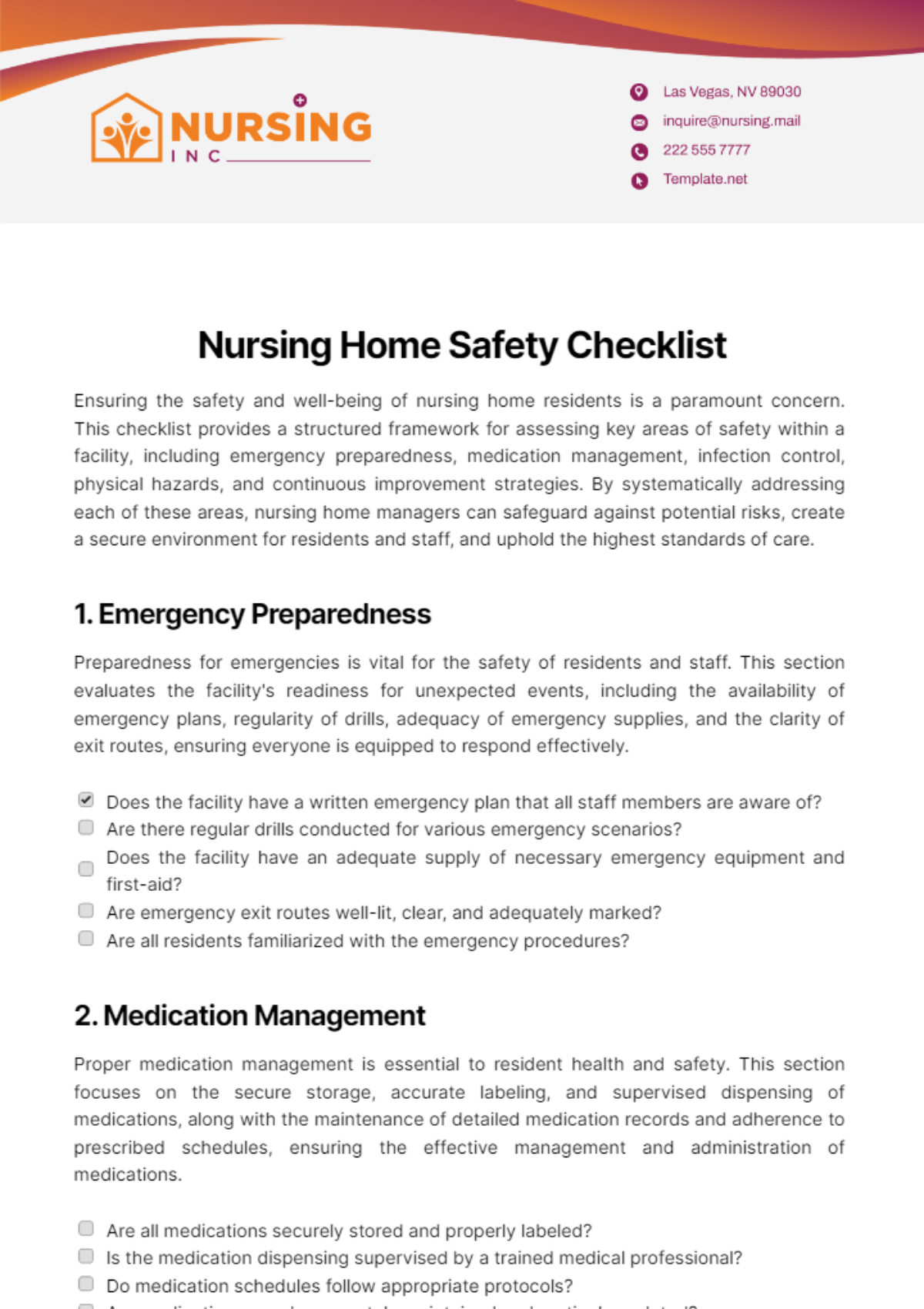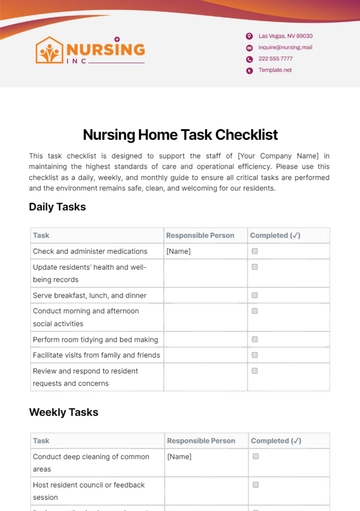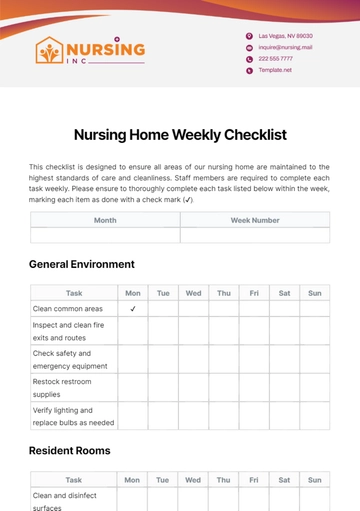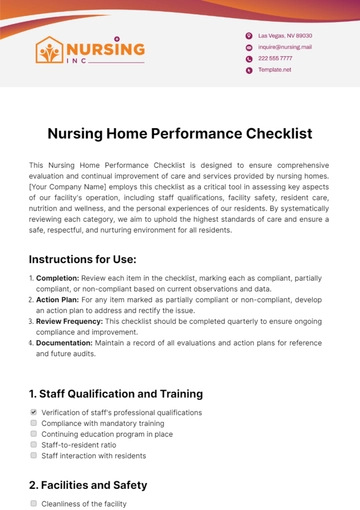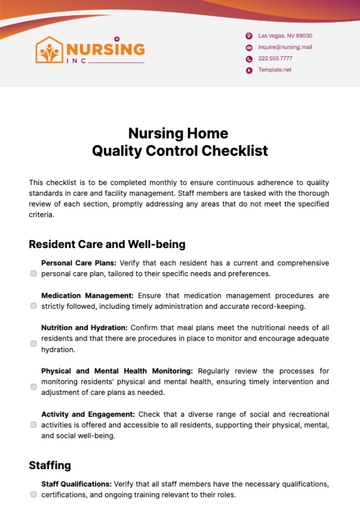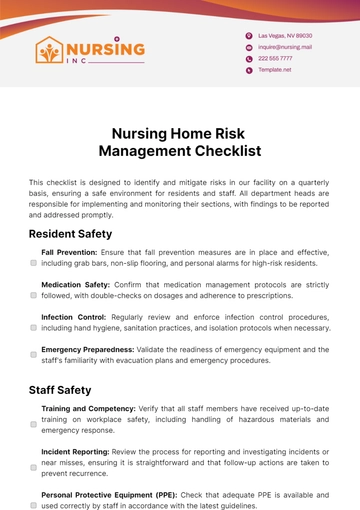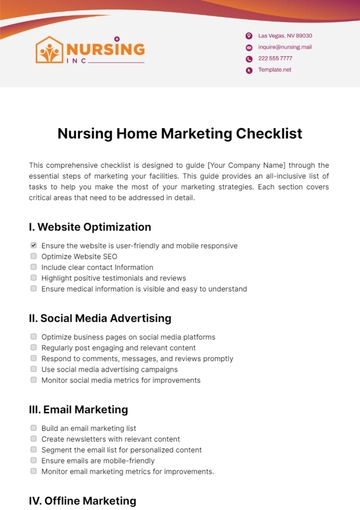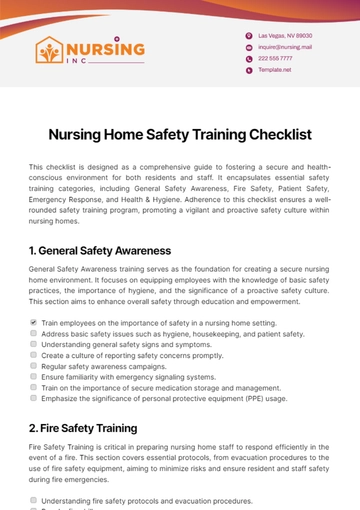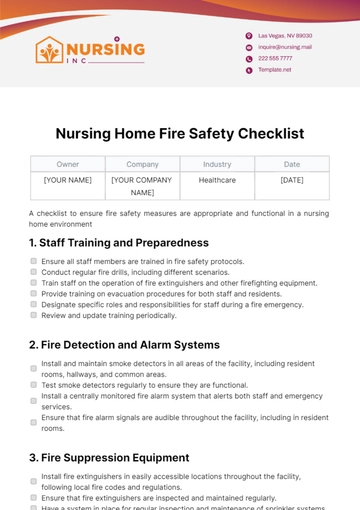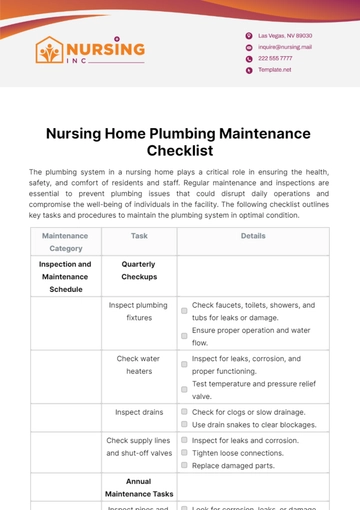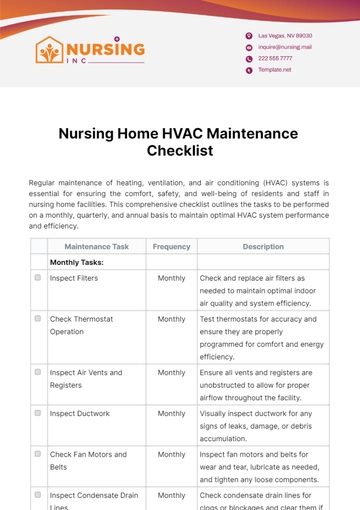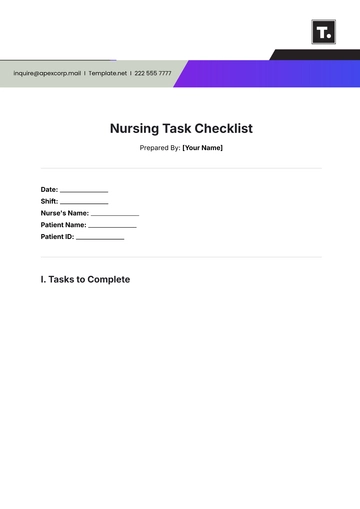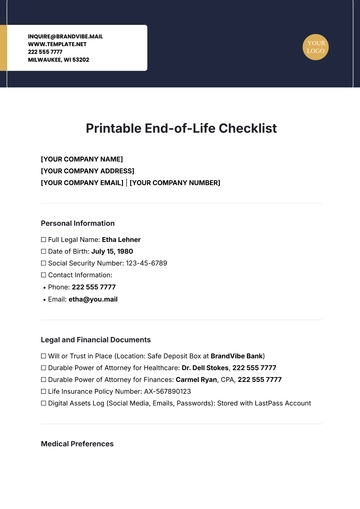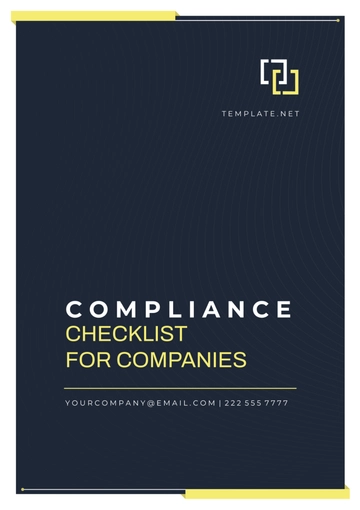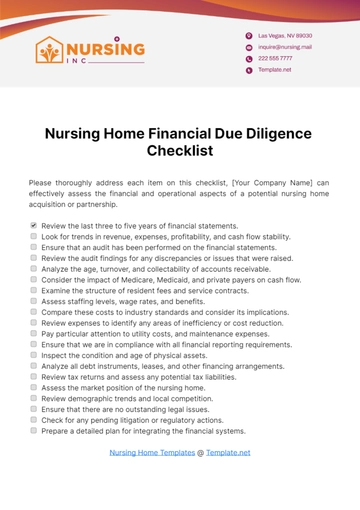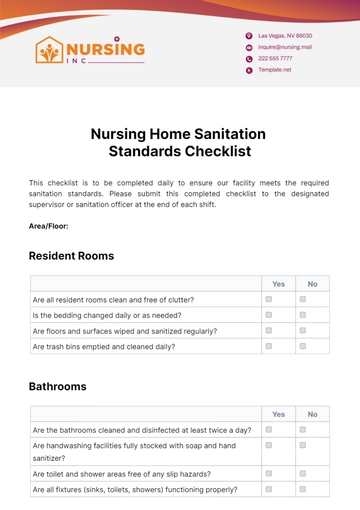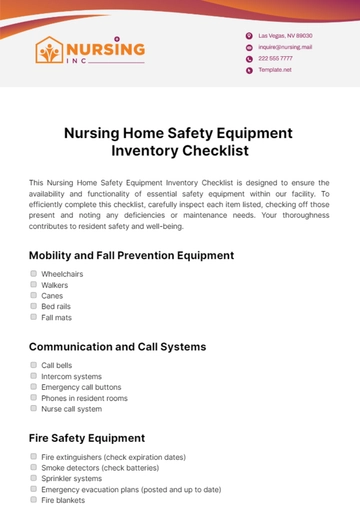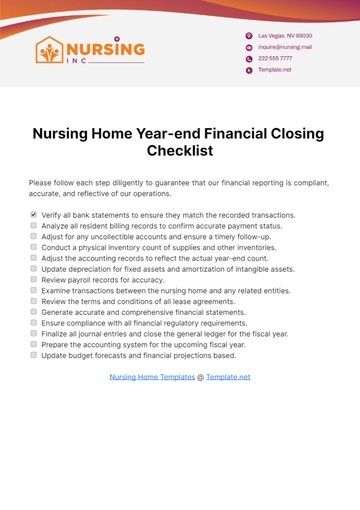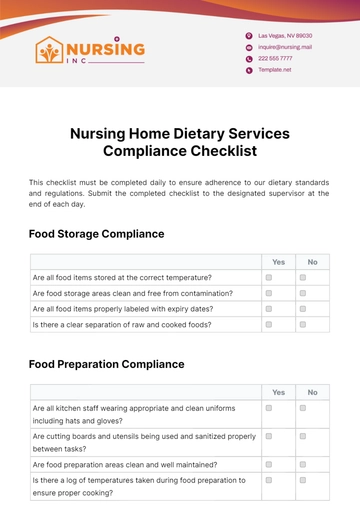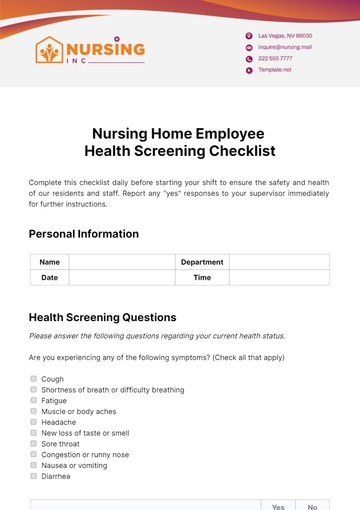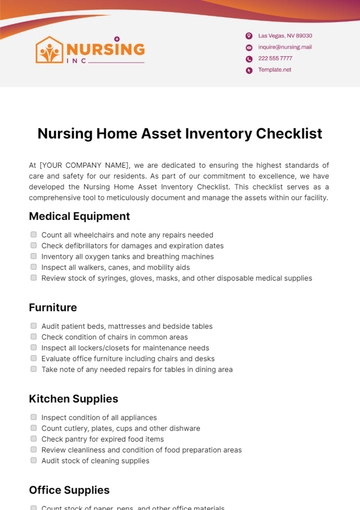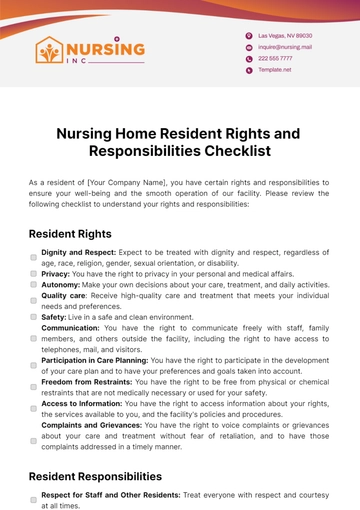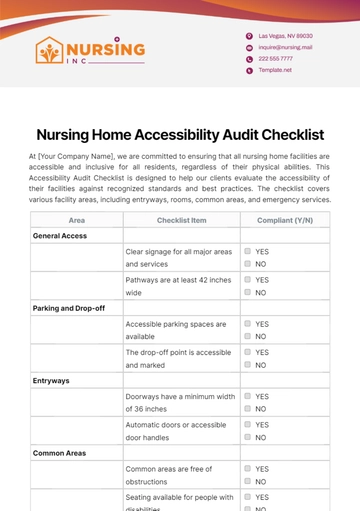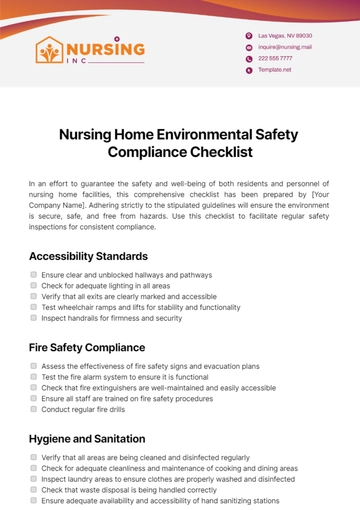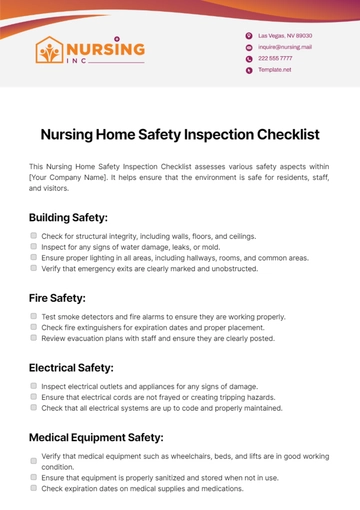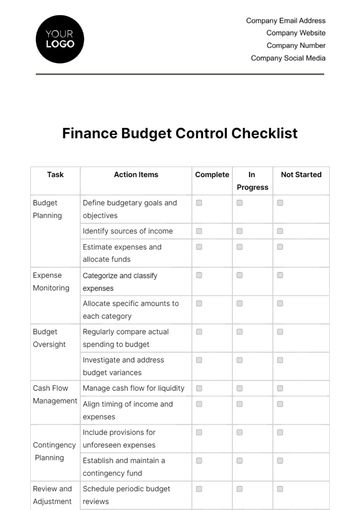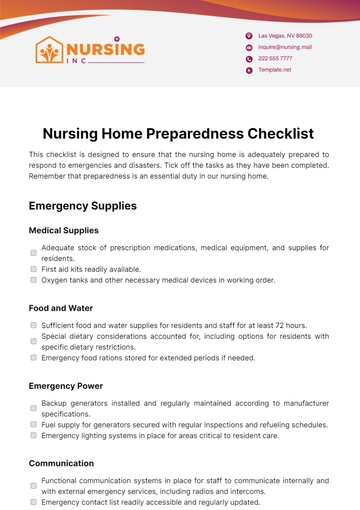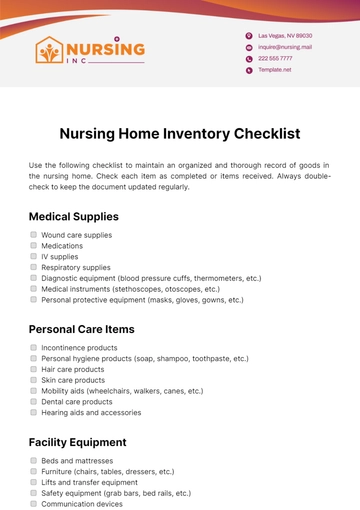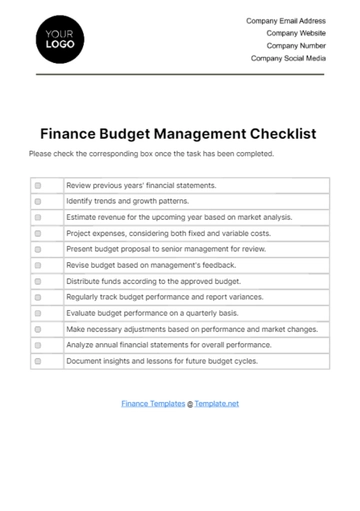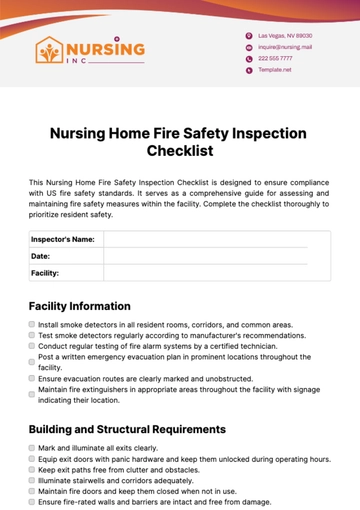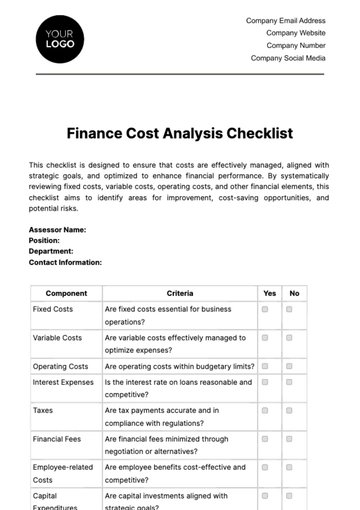Nursing Home Safety Checklist
Ensuring the safety and well-being of nursing home residents is a paramount concern. This checklist provides a structured framework for assessing key areas of safety within a facility, including emergency preparedness, medication management, infection control, physical hazards, and continuous improvement strategies. By systematically addressing each of these areas, nursing home managers can safeguard against potential risks, create a secure environment for residents and staff, and uphold the highest standards of care.
1. Emergency Preparedness
Preparedness for emergencies is vital for the safety of residents and staff. This section evaluates the facility's readiness for unexpected events, including the availability of emergency plans, regularity of drills, adequacy of emergency supplies, and the clarity of exit routes, ensuring everyone is equipped to respond effectively.
2. Medication Management
Proper medication management is essential to resident health and safety. This section focuses on the secure storage, accurate labeling, and supervised dispensing of medications, along with the maintenance of detailed medication records and adherence to prescribed schedules, ensuring the effective management and administration of medications.
3. Infection Control
Infection control is critical in maintaining a healthy living environment. This section addresses the cleaning and sanitization of living spaces, screening procedures for staff and visitors, adherence to hand hygiene, and the use of protective equipment, aiming to prevent the spread of infectious diseases within the facility.
4. Physical Hazards
Eliminating physical hazards is fundamental to ensuring a safe living and working environment. This section assesses the facility for potential tripping, slipping, and fire hazards, evaluates lighting, and inspects for structural safety, focusing on minimizing risks and accommodating residents with special needs.
5. Continuous Improvement
A commitment to continuous improvement is essential for maintaining high safety standards. This section emphasizes the importance of ongoing monitoring, staff training, feedback incorporation, resident needs assessment, and safety protocol updates, fostering an environment of proactive safety management and enhancement.
Prepared By: [Your Name]
Nursing Home Templates @ Template.net
